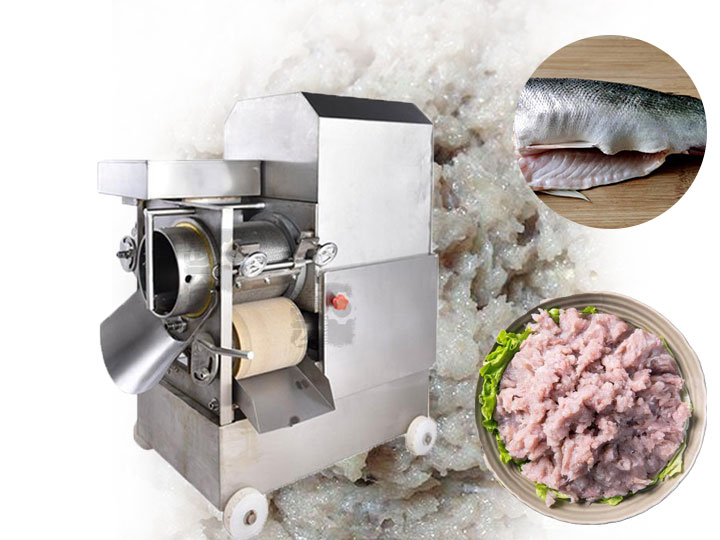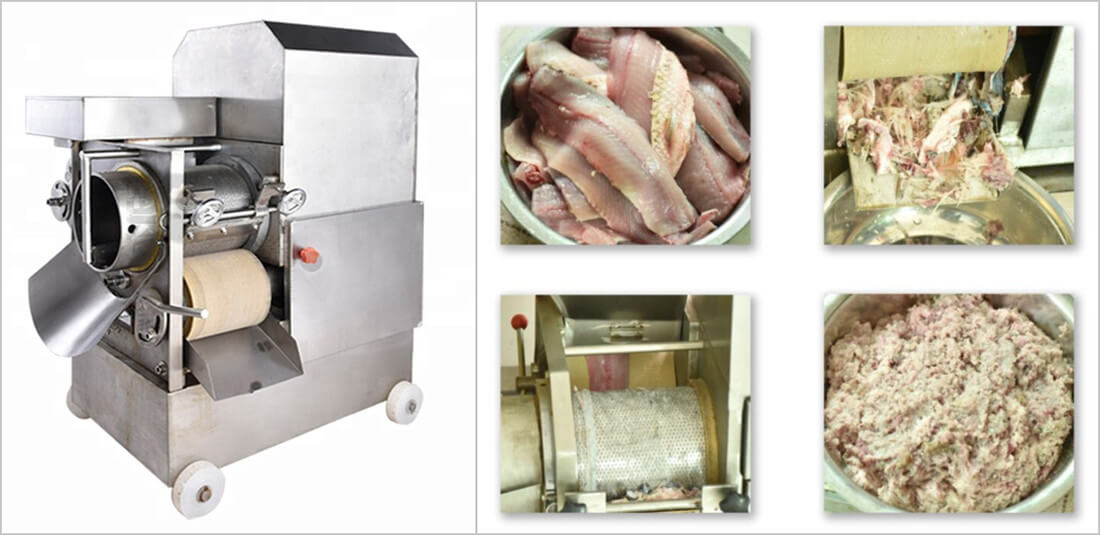10 years of experience as a food machinery equipment manufacturer
10 years of experience as a food machinery equipment manufacturer
The fisheries sector is a cornerstone of Cambodia’s economy and food security, with freshwater fish from the Tonle Sap Lake and Mekong River system, as well as marine catches, providing essential protein and livelihoods for a significant portion of the population. As demand for processed fish products grows domestically and internationally, the efficiency of fish processing operations becomes increasingly crucial. In this context, the adoption of modern food processing technology, such as the fish meat separator, presents a significant opportunity for the Cambodian aquaculture and fisheries industry.

A fish meat separator, also commonly known as a deboning machine or fish meat-bone separator, is a specialized piece of equipment designed to efficiently extract fish flesh from bones, skin, and fins. The fundamental principle of operation involves applying mechanical pressure to crush the fish, after which the softer meat is extruded through small perforations in a drum or belt, while the harder components like bones and skin are retained and discharged separately. This process significantly reduces manual labor and improves the yield of usable fish meat compared to traditional hand-filleting and deboning methods.
These machines typically consist of a feeding hopper, a pressing mechanism (often a flexible belt pressing against a perforated drum), the perforated drum itself, and separate outlets for the collected meat and the waste byproducts. Adjustments can often be made to accommodate different fish sizes and types, as well as to control the pressure and thereby the texture and quality of the separated meat.
Key Operational Features:
The introduction and wider adoption of fish meat separators in Cambodia could offer a multitude of benefits, addressing several challenges faced by the local processing sector.
Increased Yield and Reduced Waste: Traditional manual deboning, especially for smaller or irregularly shaped fish common in Cambodian catches, can be inefficient, leaving a considerable amount of edible meat on the bones. Fish meat separators are highly efficient in recovering this flesh, maximizing the usable yield from each fish. This not only improves economic returns but also contributes to reducing food waste, a critical aspect of sustainable food systems.
Enhanced Productivity and Labor Efficiency: Manual fish processing is labor-intensive and time-consuming. A fish meat separator can process a significantly larger volume of fish in a shorter period compared to a team of manual workers. This boost in productivity can help Cambodian fish processors meet growing demand, reduce operational bottlenecks, and potentially lower per-unit labor costs, even if skilled operators are required.
Improved Product Quality and Consistency: Mechanized separation can lead to a more consistent product in terms of texture and minimized bone content. While proper machine operation is crucial to avoid over-grinding, the technology generally yields finely minced meat suitable for a variety of value-added products. This consistency is often preferred for further processing into items like fish balls, fish cakes, fish sausages, and the traditional Cambodian fermented fish paste, prahok.
Value Addition and Product Diversification: The minced fish meat obtained from separators serves as a versatile raw material. It enables Cambodian producers to diversify their product offerings beyond fresh or traditionally preserved fish. Value-added products often command higher prices in both domestic and export markets, thereby increasing the overall value derived from the fishery resource. This can particularly benefit processors looking to create products from underutilized or low-value fish species, transforming them into profitable commodities.
Better Hygiene and Food Safety: Modern fish meat separators are designed with hygiene in mind, often constructed from stainless steel and engineered for easy cleaning and sanitization. Reducing manual handling can also minimize the risk of microbial contamination, contributing to improved food safety standards – an increasingly important factor for export markets and discerning domestic consumers.
The utility of fish meat separators in Cambodia spans various scales of operation and product types.

While the benefits are substantial, successful adoption of fish meat separator technology in Cambodia requires certain considerations. These include the initial capital investment for the machinery, the availability of technical support and spare parts, and the need for training personnel in proper operation and maintenance to ensure longevity and optimal performance. Furthermore, access to a consistent and adequate power supply is essential for continuous operation, particularly in more remote fishing areas.
Quality control of the input fish remains paramount; the freshness and handling of fish prior to separation will directly impact the quality of the final minced product. Therefore, integrating this technology effectively means also focusing on good post-harvest practices throughout the supply chain.
The Cambodian fish meat separator represents a valuable technological advancement for the nation’s vital fisheries and aquaculture sector. Its potential to increase processing efficiency, improve yields, reduce waste, enhance product quality, and enable value addition aligns well with Cambodia’s goals for economic development and food security. By addressing the practical considerations for its adoption, this technology can play a significant role in modernizing fish processing operations, empowering local businesses, and contributing to a more sustainable and profitable future for the Cambodian fishing industry. As the sector continues to evolve, embracing such innovations will be key to unlocking its full potential on both domestic and international stages.
